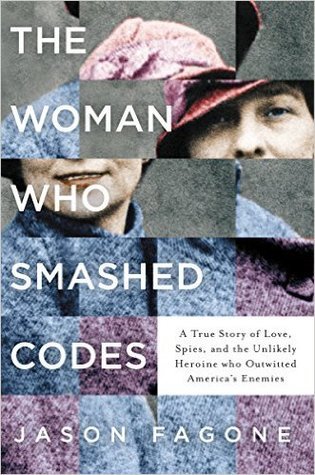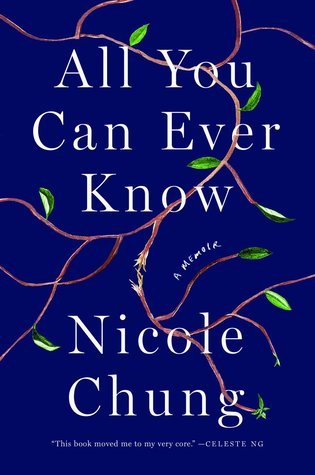#williamina fleming collection
Text
Harvard Photographic plates

One of the most interesting things that we went over in class was the Harvard photographic plates. I find it so interesting how many there are in their collection, and how advanced their technology was at the time. Harvard has accumulated over 550,000 classifications from the northern and southern hemispheres since the 1880s. They are in such undamaged shape that astronomers are still using those plates. But one of the most interesting things was how these plates helped lead to females being more involved in the discoveries in space. Before, it was mostly something men would study, but they did not want to analyze the findings. Consequently, women assumed the responsibility. This all started when Edward Pickering hired a male assistant to help document the stars. But he was completing an extraordinarily small amount of the work he was tasked with. Thus, Pickering, with his lack of work, gets done. He would then hire his female housekeeper, Williamina Flemming.
The whole point of looking over the plates was to catalog the brightness and size of the star. There was a mission to map every single star that was able to be captured. This was something very time-consuming, so it was highly undesirable to do. However, by undertaking the task, women made many discoveries in mapping the brightness and size of every single star that could be captured. But they also discovered new ways to study the stars. One of the most accomplished and talented women was Annie Cannon, who classified more than 350,000 spectra of the Harvard plates. Fleming would help classify over 10,000 stars, nebulae, and the existence of white dwarfs. Later, they published a catalog that included the ordering of stars based on their size and brightness. This was called the Harvard classification system. In conclusion, the Harvard photographic plates are not only something that mapped out the stars, but it led women to enter a field mostly dominated by men and helped change the way we document the stars.
Sources: Annie Jump Cannon Biography - Childhood, Life Achievements & Timeline (thefamouspeople.com)
How Female computers mapped the universe and brought America to the Moon, By Natalie Zarrelli March 4th, 2016
How Hardvard's vast collection of glass plates still shapes Astronomy, By Meghan Bartles February 1, 2017
0 notes
Photo

Erika Blumenfeld, Tracing Luminaries: Tracing Luminaries: Plate No. B20645 (Small Magellanic Cloud), (one of a portfolio of six intaglio prints created from laser engraved cast acrylic plates inked with transparent base, printed onto a direct starlight-exposed cyanotype chine collé using Okuwara paper, bonded to Hahnemühle Copperplate backing paper, with printed ink gilded with 24-karat gold leaf), 2022 [© Erika Blumenfeld]
/ Plate Description /
Observatory: Harvard Boyden Station, Arequipa, Peru
Telescope: 8-inch Bache Doublet, Voigtlander, reworked by Clark
Date Exposed: 19 October 1897
Class: L
Right Ascension: 0 hours 5 minutes (?)
Declination: -74.1 degrees (?)
Quality: 4
Exposure: 133 minutes (?)
Plate Events: Marks removed, likely around 2009-02-03T14:34:05; Plate not scanned for DASCH; Plate was added to The Williamina Fleming Collection, a collection created to preserve around 600 marked plates, even though the marks from this plate had been removed.
Marked by: This plate was marked by Henrietta Swan Leavitt and possibly her assistants.
Curatorial & Astronomical Notes: This plate was used in Henrietta Swan Leavitt’s 1908 groundbreaking paper titled, 1777 Variables in the Magellanic Clouds, which compared Cepheid variable stars, and eventually led to her far-reaching discovery of the period-luminosity relationship. This plate number is noted on pages 9 (13 April), 19 (14 April), 31 (15 April), 37 (17 April), 49 (18 April), 54 (18 April), 67 (19 April), 87 (25 April), 94 (27 April), 108 (28 April), 110 (29 April), 112 (29 April), 117 (10 may), 131 (16 June), 150 (04 October) in Leavitt’s 1905 notebook.
#art#astronomy#visual writing#notation#mixed media#intaglio#portfolio#erika blumenfeld#henrietta swan leavitt#williamina fleming collection#harvard college observatory#astronomical photographic plate collection
19 notes
·
View notes
Photo




Extraordinary Women: Books to Read
The Woman Who Smashed Codes: A True Story of Love, Spies, and the Unlikely Heroine who Outwitted America's Enemies by Jason Fagone
In 1916, at the height of World War I, brilliant Shakespeare expert Elizebeth Smith went to work for an eccentric tycoon on his estate outside Chicago. The tycoon had close ties to the U.S. government, and he soon asked Elizebeth to apply her language skills to an exciting new venture: code-breaking. There she met the man who would become her husband, groundbreaking cryptologist William Friedman.
In The Woman Who Smashed Codes, Jason Fagone chronicles the life of Elizebeth Smith who played an integral role in our nation's history for forty years. After World War I, Smith used her talents to catch gangsters and smugglers during Prohibition, then accepted a covert mission to discover and expose Nazi spy rings that were spreading like wildfire across South America, advancing ever closer to the United States. As World War II raged, Elizebeth fought a highly classified battle of wits against Hitler's Reich, cracking multiple versions of the Enigma machine used by German spies. Meanwhile, inside an Army vault in Washington, William worked furiously to break Purple, the Japanese version of Enigma--and eventually succeeded, at a terrible cost to his personal life.Fagone unveils America's code-breaking history through the prism of Smith's life, bringing into focus the unforgettable events and colorful personalities that would help shape modern intelligence.
My Own Words by Ruth Bader Ginsburg, Mary Hartnett (With), Wendy W. Williams (With)
The first book from Ruth Bader Ginsburg since becoming a Supreme Court Justice in 1993—a witty, engaging, serious, and playful collection of writings and speeches from the woman who has had a powerful and enduring influence on law, women’s rights, and popular culture.
My Own Words offers Justice Ginsburg on wide-ranging topics, including gender equality, the workways of the Supreme Court, being Jewish, law and lawyers in opera, and the value of looking beyond US shores when interpreting the US Constitution. Throughout her life Justice Ginsburg has been (and continues to be) a prolific writer and public speaker. This book’s sampling is selected by Justice Ginsburg and her authorized biographers Mary Hartnett and Wendy W. Williams. Justice Ginsburg has written an introduction to the book, and Hartnett and Williams introduce each chapter, giving biographical context and quotes gleaned from hundreds of interviews they have conducted. This is a fascinating glimpse into the life of one of America’s most influential women.
The Glass Universe: How the Ladies of the Harvard Observatory Took the Measure of the Stars by Dava Sobel
In the mid-nineteenth century, the Harvard College Observatory began employing women as calculators, or "human computers," to interpret the observations their male counterparts made via telescope each night. At the outset this group included the wives, sisters, and daughters of the resident astronomers, but soon the female corps included graduates of the new women's colleges--Vassar, Wellesley, and Smith. As photography transformed the practice of astronomy, the ladies turned from computation to studying the stars captured nightly on glass photographic plates.
The "glass universe" of half a million plates that Harvard amassed over the ensuing decades--through the generous support of Mrs. Anna Palmer Draper, the widow of a pioneer in stellar photography--enabled the women to make extraordinary discoveries that attracted worldwide acclaim. They helped discern what stars were made of, divided the stars into meaningful categories for further research, and found a way to measure distances across space by starlight. Their ranks included Williamina Fleming, a Scottish woman originally hired as a maid who went on to identify ten novae and more than three hundred variable stars; Annie Jump Cannon, who designed a stellar classification system that was adopted by astronomers the world over and is still in use; and Dr. Cecilia Helena Payne, who in 1956 became the first ever woman professor of astronomy at Harvard--and Harvard's first female department chair.
All You Can Ever Know by Nicole Chung
What does it mean to lose your roots—within your culture, within your family—and what happens when you find them?
Nicole Chung was born severely premature, placed for adoption by her Korean parents, and raised by a white family in a sheltered Oregon town. From early childhood, she heard the story of her adoption as a comforting, prepackaged myth. She believed that her biological parents had made the ultimate sacrifice in the hopes of giving her a better life; that forever feeling slightly out of place was simply her fate as a transracial adoptee. But as she grew up—facing prejudice her adoptive family couldn’t see, finding her identity as an Asian American and a writer, becoming ever more curious about where she came from—she wondered if the story she’d been told was the whole truth.
With warmth, candor, and startling insight, Chung tells of her search for the people who gave her up, which coincided with the birth of her own child. All You Can Ever Know is a profound, moving chronicle of surprising connections and the repercussions of unearthing painful family secrets—vital reading for anyone who has ever struggled to figure out where they belong.
#nonfiction#non-fiction#biography#autobiography#biographies#to read#womens history#tbr#booklr#history#nonfiction books#nonfiction reads#library#public library#summer reading#Resources
26 notes
·
View notes
Photo

«We all make mistakes sometimes. What’s important is that we learn how to fix them». Williamina Fleming fixed the errors in her sequence on plate I20057, Plate took on January 17, 1898. [Astronomical Photographic Plate Collection, Harvard College Observatory – Plate Stacks, Harvard University, Cambridge, MA]
0 notes
Photo

Erika Blumenfeld, Tracing Luminaries: Plate No. I20197 (Variable stars in Taurus & The Pleiades), (one of a portfolio of six intaglio prints created from laser engraved cast acrylic plates inked with transparent base, printed onto a direct starlight-exposed cyanotype chine collé using Okuwara paper, bonded to Hahnemühle Copperplate backing paper, with printed ink gilded with 24-karat gold leaf), 2022 [© Erika Blumenfeld]
/ Plate Description /
Observatory: Harvard College Observatory, Cambridge, Massachusetts
Telescope: 8-inch Draper Doublet, Voigtlander Reworked by Clark
Date Exposed: 10 February 1898
Class: L
Right Ascension: 3 hours, 50 minutes
Declination: +27.0 degrees
Quality: 4
Exposure: 16 minutes
Plate Events: Marks removed; plate scanned for DASCH (2017-12-20T13-14-14).
Marked by: This plate was marked by Williamina Paton Fleming.
Curatorial & Astronomical Notes: This plate was used in Williamina Paton Fleming’s work identifying a variable star in the region of the star Algol in the constellation Taurus, although Algol does not appear on this plate. The plate appears in Fleming’s 1905 notebook on page 72, dated 21 July, in which she notes “Meas. to det. pos. of comp. stars” likely meaning “measured to determine position of comparable stars to Algol. The plate’s jacket shows that later measurements were taken by Evelyn Leland, referencing pages 92-94 in book 30.
#art#astronomy#visual writing#notation#mixed media#intaglio#portfolio#erika blumenfeld#williamina fleming#evelyn leland#harvard college observatory#astronomical photographic plate collection#1890s#1900s#2020s
22 notes
·
View notes
Photo

«We all make mistakes sometimes. What's important is that we learn how to fix them. Williamina Fleming fixed the errors in her sequence on plate I20057 Williamina Fleming fixed the errors in her sequence on plate I2005»; Plate taken on January 17, 1898 [Astronomical Photographic Plate Collection, Harvard College Observatory – Plate Stacks, Harvard University, Cambridge, MA]
#astronomy#notation#visual writing#photography#williamina fleming#astronomical photographic plate collection#harvard college observatory#1890s
100 notes
·
View notes